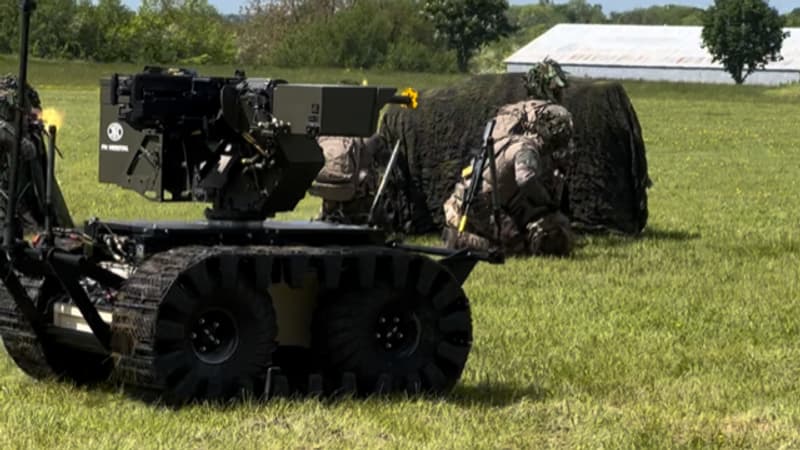“You shouldn’t miss the robotics train, but you shouldn’t take just any either.” This is the doctrine of the Army Chief of Staff, General Pierre Schill. He launched this message during the robotics day that was held on May 10 at the Beynes (Yvelines) training camp. This train set in motion with the General Directorate of Armaments (DGA), the Defense Innovation Agency (AID) and the manufacturers is already underway.
This objective was launched in 2020 with the Vulcain program that intends to carry out tests from 2025. The exercise takes place in Aisne at the training center for actions in urban areas (Cenzub).
AI in the battlespace
Troop training has already begun. We attend an exercise where soldiers and robots are teammates. A drone is sent to spot the enemy, then the attack is launched with a robot armed with a machine gun, and then a drone drops explosives.
To evacuate a wounded man, another drone drops smoke bombs while a robot stretcher goes to recover the soldier in the middle of the fighting. For the Army General Staff, this is no longer science fiction, but already a reality.
A killer AI?
This modernization raises many questions. Can an artificial intelligence decide to kill without a human giving the order?
In a report by the Ethics Committee of the Ministry of the Armed Forces, France pledged not to use “fully autonomous lethal weapons systems”, systems called “SALA”. CEMAT admits, however, that this position is not unanimous in the world.
The machine-dependent soldier
Another question, isn’t the soldier at risk of becoming dependent on the machine?
For General Pellistrandi, a BFM consultant, the basic training of soldiers will always be based on the fundamentals they will use to know how to act in degraded mode.
Finally, there are cyber attacks that could target drones and robots through communication networks. Let’s not forget that before its ground attack to invade Ukraine, Russia launched a cyber attack to cut off all communication networks.
Source: BFM TV


